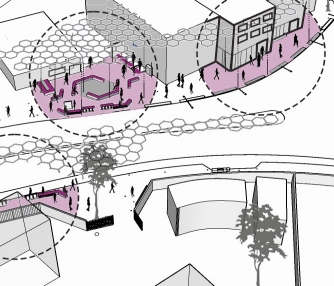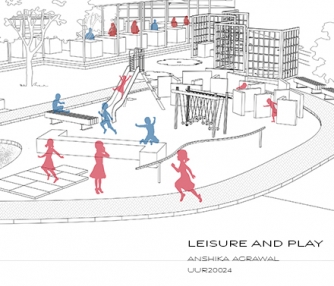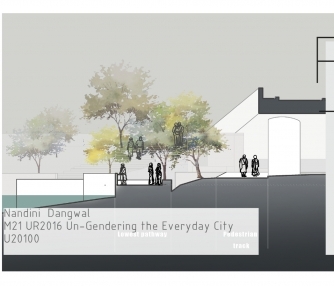- Tutor/s Sahiba Gulati | Shreya Gambhir
- TA Isha Chouksey
- Code UR2016
- Faculty Planning
- Level L2 Studio Unit
In India, vehicle ownership usually lies with men, whether it is a car, a two-wheeler, or a bicycle, to say nothing of auto-rickshaws. Our cities, however, are imagined around the automobile. How do we imagine a city that recognises that half of its population does not own a vehicle? How do we imagine a city where half of the population is a woman? Through research conducted by various authors, ranging from Phadke, Ranade and Khan to Ayona Datta, and personal research, it is apparent that the street as a public space belongs more to a man than a woman. According to Ayona Datta, women’s presence in the public street is legitimised by the production of her morality; according to Phadke, Khan and Ranade, women constantly exhibit their purpose to be in public space; they are never there without a reason. The city constantly legitimises domesticities for women, especially women from poor households. All of this limits their mobility, access to greater opportunities and their right to claim public spaces in the city. How then do you normalise the presence of a female in the city, and a growing female workforce? How then do we re-imagine the street? And by re-imagining the street, how then do we re-imagine the city itself?



